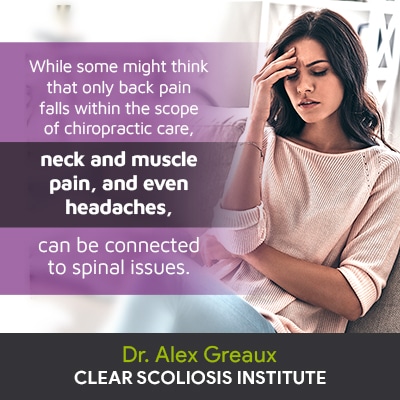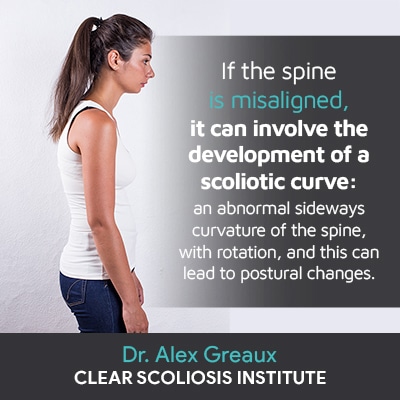
When it comes to the spine, being proactive is important not only because there are a number of spinal conditions a person can develop, but also because some of those conditions are progressive, and the spine’s overall health and function can affect the body in many ways. A chiropractor can help preserve the spine’s health and function, but only if the signs that chiropractic care is needed are recognized and addressed.
Chiropractors can help with a number of medical issues, including muscle soreness/stiffness, neck and back pain, postural changes, and even headaches; if you are experiencing any of these issues, it’s time to see a chiropractor so the underlying cause of the pain can be diagnosed, assessed, and treated.
Before we move on to the telltale signs that it’s time to see a chiropractor, let’s first talk generally about chiropractic care and how it can impact the body.
In the United States alone, every year, millions of people seek chiropractic care to address a number of issues, but what exactly does that care entail, and what types of issues can it address? For people who have yet to experience the benefits of chiropractic care, these questions are common.
As an integrative branch of medicine, chiropractic focuses on the diagnosis and treatment of joint misalignments, particularly those of the spine. Joint misalignments involve a number of spinal conditions and can also affect surrounding muscles and nerves.
Through manipulative treatment, such as targeted chiropractic adjustments, a chiropractor can work towards realigning misaligned joints, but that’s not all we can do; here at the CLEAR Scoliosis Institute, in addition to joint manipulation, we are trained in a variety of modalities such as physical and manual therapy, rehabilitation, and educating patients on healthy lifestyle habits.
As mentioned, it can be difficult to determine whether back pain, general muscle soreness, and postural changes are issues that need to be addressed with professional help, or whether they are merely a natural part of the aging process.
In addition, many people fear doctors and put off seeking medical help until issues escalate to the point that pain and related mobility issues can’t be ignored; while this is understandable, it’s a mistake that many make.
Particularly in the context of developing spinal conditions, some are progressive, meaning they will get worse if left untreated, or if not treated appropriately.
So is there a telltale sign or two that people should be aware of indicating the need for chiropractic help? While every case is different and there are no treatment guarantees, if you are experiencing unexplained back, neck, or muscle pain, you should see a chiropractor.
In addition, even if you are not experiencing pain, but are noticing unexplained postural changes, this is another telltale sign that it’s time to seek help.
As pain is the most-common symptom that brings patients in to see me, let’s start there.
No one wants to experience pain, but the truth is, it serves a purpose. It tells us that something is wrong inside the body; it tells us it’s time to get help to determine its cause.
While not all conditions that require treatment are associated with pain, many are. Let’s take scoliosis, for example, a highly-prevalent spinal condition that affects close to seven million people in the United States alone; it’s painful in adults, but pain is not a common component of the condition in children and adolescents.
However, in younger individuals not experiencing pain, it’s even more crucial to seek proactive treatment because the condition is progressive and growth is the number-one trigger for progression.
So let’s talk about back, neck, and muscle pain. Through taking a patient’s medical history, conducting a comprehensive physical examination, and X-ray imaging, if needed, in most cases, chiropractors can pinpoint the cause of pain and design an effective treatment plan moving forward.
Back, Neck, and Muscle Pain

As a CLEAR-certified scoliosis chiropractor, I’m going to focus on scoliosis for our current discussion, but there are, of course, a number of other spinal conditions people can develop such as kyphosis, lordosis, osteoarthritis, and osteoporosis: all with the potential to cause pain by disrupting the spine’s biomechanics, function, and overall health, especially if left untreated.
The spine is naturally curved for a reason; its healthy natural curvatures give it strength, flexibility, and facilitate its ability to distribute weight and stress that’s incurred during movement.
When the spine becomes misaligned, its vertebrae (bones of the spine) are no longer stacked neatly on top of one another as they are in a healthy spine, and unhealthy curvatures can develop.
When the spine’s natural curves are replaced by unnatural ones, it can cause varying levels of pain, not just in the spine itself, but also in its surrounding musculature.
It’s not just the spine and its individual parts that are charged with maintaining its natural curvatures and alignment; its surrounding muscles also play a role in providing it with essential support and stabilization.
As an unhealthy curvature develops, it introduces a lot of uneven forces to the body, and this can lead to uneven muscle use and strain as the spine’s surrounding muscles struggle to support the unnaturally-curved spine.
For example, when a spinal condition develops in the cervical spine (neck), this can cause pain in the neck, back, surrounding muscles, arms, and can also cause headaches; this is especially the case if forward-head posture is introduced.
Also known as ‘military neck’ because it gives the appearance of standing at attention, cervical kyphosis can cause the neck to become unnaturally straight, shifting the head forward and increasing its weight on the spine and its surrounding muscles.
This can also cause tension headaches as the muscles of the neck and upper back become stiff and sore from trying to support the increasing weight of the head.
In addition, spinal conditions like scoliosis, and those that involve unnatural spinal curves, can disrupt the flow of cerebrospinal fluid (CSF), which is also associated with headaches that can reach migraine status.
Before we move on to the next telltale sign that a chiropractor is needed (postural changes), I’d like to return to my earlier statement about the need for treatment of spinal conditions, even if pain is not an issue.
Pain and Patient Age
As mentioned, pain is far more common in adult scoliosis than it is in the condition’s most prevalent form: adolescent idiopathic scoliosis (AIS).
This is because in people who have not yet reached skeletal maturity, meaning they are still growing, the constant lengthening motion the spine is experiencing during growth counteracts the compressive force of the unnatural curvature.
In adults who have reached skeletal maturity, the spine and its surrounding muscles and nerves are vulnerable to compression and the pain it can cause, particularly if nerves are compressed as this can cause pain not only where the nerve is located, but also radiating pain throughout the body, commonly felt in the legs and feet.
As compressed nerves can cause pain felt far from their site of origin, this is another reason it’s important to seek chiropractic care: so the true cause of pain can be determined.
For example, if a person is experiencing pain in the feet, it’s natural to think it’s related to a foot problem, but if the sciatic nerve, that starts in the lower back, is compressed, it can cause pain in the lower back, the buttocks, down the backs of the legs, and even into the feet.
Now that we have talked about back and neck pain, muscle pain, headaches, and how spinal conditions can be the cause, let’s talk about the next telltale sign a chiropractor is needed: unexplained postural changes.
The spine plays many important roles within the body, including allowing us to stand upright and maintain good posture and balance. If you, or someone you care about, is noticing postural changes that impact coordination, balance, gait, and the body’s overall symmetry, this can indicate the presence of scoliosis, as well as other spinal conditions.

The telltale visual signs of scoliosis include postural changes such as uneven shoulders, hips, a rib arch, arms and legs that appear to hang at different lengths, and more.
While every case of scoliosis is different ranging from mild to severe, the condition is likely, at some point, to affect the body’s overall symmetry, especially if left untreated.
If a person’s posture is changing, it can be caused by a structural abnormality within the spine itself, and even if it’s not painful, as it rarely is in children and adolescents, it needs to be treated proactively to prevent it from getting worse and causing more overt symptoms.
If a condition is structural, it needs to be addressed on a structural level to be treated effectively; no massage or exercise, on its own, will have the power to do that.
Here at the CLEAR, we specialize in scoliosis and can apply scoliosis-specific chiropractic care as part of an integrative and customized treatment plan that has the potential to reduce the abnormal curvature, which addresses the underlying cause of any pain and related postural changes.
People see chiropractors for many different reasons. If you are unsure of whether or not you need to see one, ask yourself if you are experiencing any unexplained back, neck, or muscle pain, headaches, and/or postural changes; if the answer is yes, it’s time to see a chiropractor.
Chiropractors can help with pain relief by diagnosing and treating its underlying cause, and if the cause is a structural abnormality within the spine, such as scoliosis, there is a team of CLEAR-certified scoliosis chiropractors waiting to help. We have the training, knowledge, and experience to design customized treatment plans that combine multiple forms of treatment for the best results.
When it comes to complex spinal conditions like scoliosis, its nature necessitates a customized treatment approach that addresses the specifics of each patient and their condition, and there is also a big difference between using general chiropractic as part of treatment, or scoliosis-specific chiropractic.
A general chiropractor will not be able to achieve the same results that a scoliosis chiropractor will, quite simply, because scoliosis is a complex condition that requires specific training to be able to assess and treat effectively.
Here at the CLEAR Scoliosis Institute, we combine scoliosis-specific chiropractic care, a variety of therapies, and specialized exercises; together, these complementary treatment modalities can help reduce a scoliotic curve, relax and strengthen affected muscles, achieve a more balanced body position, and rehabilitate the spine.
Clear-institute.org - CLEAR-Certified Scoliosis Chiropactors
Clear-institute.org - What is a Cerical Curvature and Why Is It Important?
Cailliet, Rene - Pain in the Neck and Arm
Spinehealth.com - Kyphosis Causes & Treatment
Spinehealth.com - Lordosis Definition

CLEAR provides a unique and innovative way of understanding scoliosis. Sign up to receive facts and information you won’t find anywhere else.

I enjoy reading stuff like this since it provides knowledge that can benefit one's health. nice blog!
Thank you so much for sharing all this wonderful info. It is so appreciated.
Thank you so much for sharing all this wonderful info. It is so appreciated.
very interesting , good job and thanks for sharing such a good blog.
I was suffering from this sort of problem.